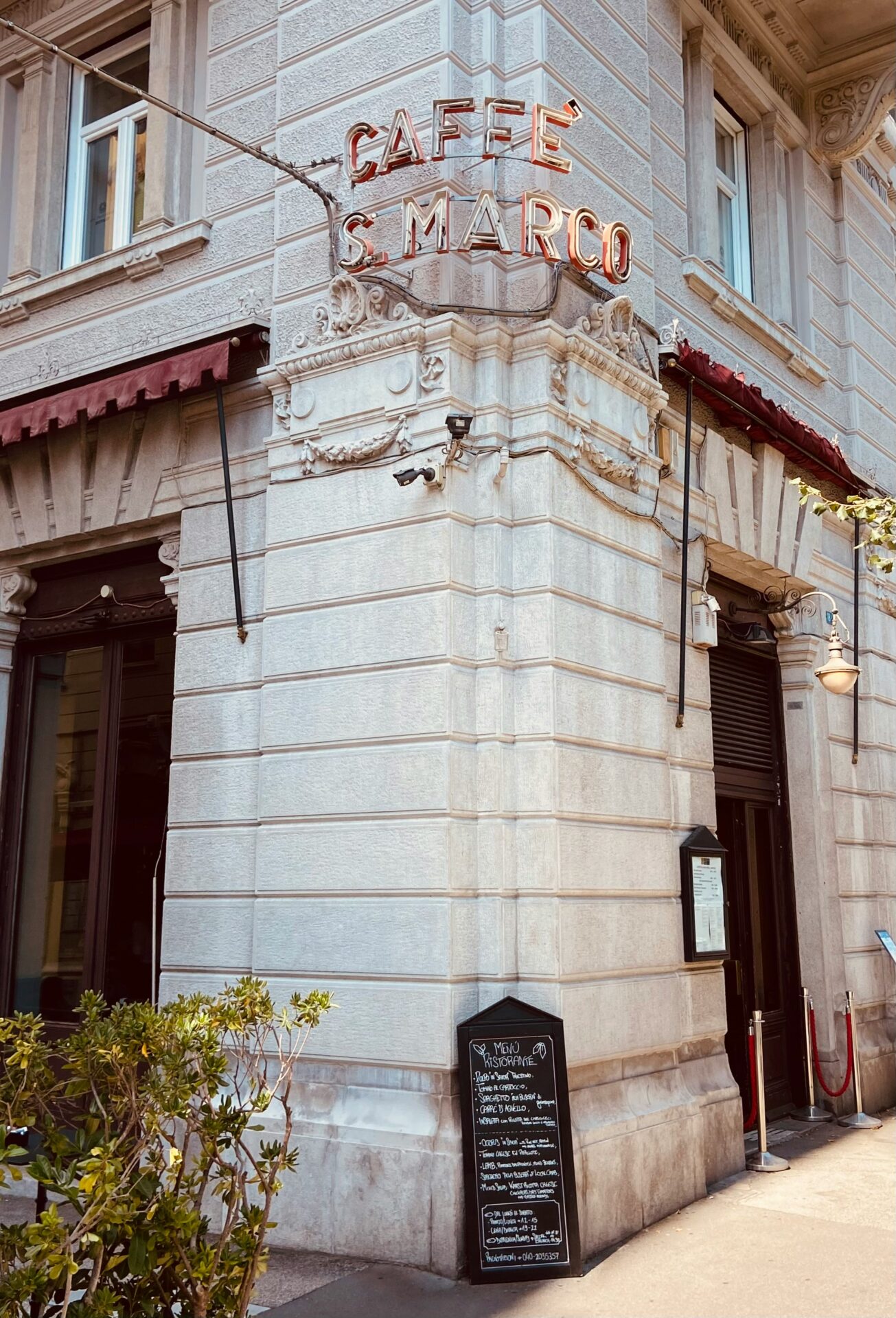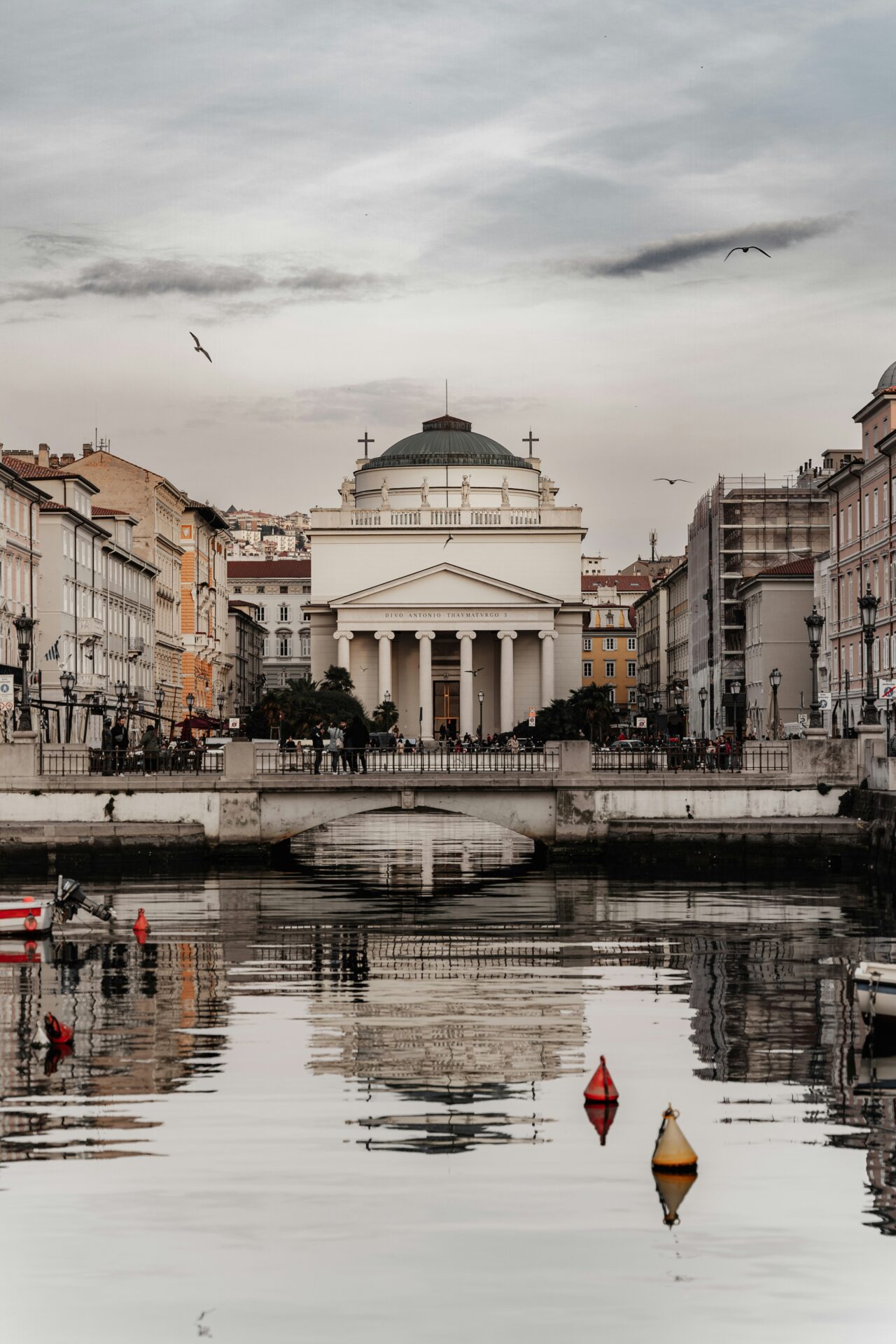I still remember my first glimpse of Piazza Unità d’Italia in Trieste, with the vast Adriatic Sea stretching before me. Standing in this magnificent open space, I couldn’t help but feel a sense of awe. This stunning plaza holds the distinction of being Europe’s largest seafront square, offering visitors a perfect blend of architectural grandeur and maritime beauty.
The locals once simply called it “Piazza Grande” (the big square), and it’s easy to see why. As I wandered across the expansive plaza, elegant Habsburg-era buildings surrounded me on three sides, while the fourth opened dramatically to the sea. The square serves as Trieste’s beating heart, where the Italian city’s unique cultural identity—influenced by Austrian, Slovenian, and Italian heritage—comes vividly to life.
During my visit, I found myself returning to this special place throughout the day.
In the morning, I sipped espresso at one of the square’s historic cafés. By afternoon, I watched sunlight dance across the ornate facades of government buildings. And as evening fell, I joined locals and travelers alike who gathered to watch the sunset paint the Adriatic in golden hues.
The piazza truly transforms with the changing light, making it worth experiencing at different times of day.

The Grandeur of Piazza Unità d’Italia
Standing at the edge of Piazza Unità d’Italia in Trieste, I’m always struck by its breathtaking vastness stretching toward the Adriatic Sea. This magnificent square represents the heart of Trieste, combining historical significance with architectural splendor.
Historical Significance
Walking across this grand piazza, I feel the layers of history beneath my feet. During the Austro-Hungarian Empire, this square served as the administrative center of Trieste, then the empire’s most important seaport. The name “Unità d’Italia” (Italian Unity) was given after World War I when Trieste finally joined Italy in 1918.
Before this, it was called Piazza Grande or Piazza San Pietro, reflecting the city’s changing political allegiances. The square has witnessed imperial visits, political rallies, and cultural celebrations throughout centuries.
Today, it remains the beating heart of Triestine civic life. Local festivals, concerts, and markets bring the piazza alive throughout the year, continuing traditions that have defined this space for generations.

Architectural Marvels
The buildings surrounding Piazza Unità d’Italia showcase a stunning blend of architectural styles that took my breath away. The most impressive is the Palazzo del Governo (Government Palace), with its ornate façade and prominent clock tower dominating the eastern side.
The square is framed by several other notable structures:
- Municipal Palace (City Hall) – featuring impressive neoclassical design
- Palazzo Modello – built in 1871 with elegant proportions
- Palazzo Stratti – home to the historic Caffè degli Specchi since 1839
I was particularly impressed by the Fountain of the Four Continents, created in 1751 by Giovanni Battista Mazzoleni. The statues represent Europe, Asia, Africa, and America (as Antarctica wasn’t yet discovered).
At night, the illuminated buildings create a magical atmosphere that’s perfect for an evening stroll. The open sea view makes this piazza truly unique among European squares.

Cultural Tapestry of Trieste
Trieste’s unique position at the crossroads of Latin, Germanic, and Slavic worlds has created one of Europe’s most fascinating cultural blends. Walking through the city feels like traversing multiple countries without ever leaving Italy.
Linguistic Diversity
The streets of Trieste buzz with a remarkable mixture of languages that reflect its complex history. Italian dominates today, but listen carefully and you’ll hear Triestine dialect, a unique variant with Venetian influences.
During my walks around Piazza Unità, I’ve often overheard conversations in German, a reminder of the Habsburg influence when Trieste served as Vienna’s imperial port. Slovenian is also commonly spoken, especially in cafés near the border areas.
English has gained popularity with younger residents and the international community. This linguistic medley isn’t just for show—it’s woven into daily life, with street signs and menus often featuring multiple languages. The University of Trieste even celebrates this diversity with specialized language programs.

Art Nouveau Influence
Trieste’s architectural landscape showcases stunning Art Nouveau influences, locally known as Liberty Style. I’ve spent hours admiring these elegant buildings with their decorative elements and flowing lines.
The city embraced this artistic movement during its Habsburg prosperity period, creating a striking contrast to the neoclassical buildings around Piazza Unità. Walking along Via Dante, you’ll spot elaborate façades with floral motifs, wrought iron details, and colorful ceramic decorations.
Cafés like Caffè San Marco display beautiful Art Nouveau interiors with original furnishings. Many of these buildings were commissioned by wealthy merchants who wanted to display their cosmopolitan taste. The style represents Trieste’s golden era when it connected Vienna to the Mediterranean world.

Yearly Events and Festivals
Trieste’s calendar bursts with cultural celebrations that highlight its diverse heritage. The Barcolana regatta each October transforms the waterfront into the world’s busiest sailing arena, visible from Piazza Unità d’Italia.
I love visiting during the Trieste Film Festival in January, when international cinema takes over the city. It’s the largest festival of Central and Eastern European films in Italy.
Summer brings the Joyce Summer Festival, celebrating James Joyce’s years in Trieste with literary walks and readings. Don’t miss the Miramare Christmas Market if you visit in December—the Habsburg castle provides a magical backdrop for artisan crafts and regional foods.
The Science Fiction Festival draws an international crowd each fall, while traditional Italian holidays get distinctive Triestine twists with influences from Slovenian and Austrian traditions.
Exploring the Surroundings
The vibrant city of Trieste offers much more than just its famous main square. When you venture beyond Piazza Unità d’Italia, you’ll discover charming neighborhoods and scenic waterways that showcase the city’s unique character and cultural heritage.
The Charm of Local Neighborhoods
Just a short walk from Piazza Unità d’Italia, I found myself wandering through Trieste’s captivating neighborhoods. The city’s multicultural history is evident in every corner, with Austrian, Slovenian, and Italian influences blending seamlessly.
For an authentic experience, I recommend exploring the old town with its narrow streets and historic buildings. The San Giusto area, home to the medieval castle, offers breathtaking views of the city and the Adriatic Sea.
A short trip to Muggia, a small coastal town about 20 minutes from Trieste, is well worth your time. This charming peninsula feels like a hidden gem with its colorful buildings and relaxed atmosphere. I enjoyed the less touristy vibe and delicious seafood restaurants along its small harbor.

A Stroll Along the Grand Canal
Walking along Trieste’s Grand Canal was one of my favorite experiences in the city. Built in the 18th century, this waterway extends from the sea into the heart of the city, creating a picturesque setting lined with beautiful buildings.
The iconic Church of Sant’Antonio Nuovo stands majestically at the canal’s end, making a perfect photo opportunity. I noticed many locals gathering at the cafés along the canal, especially in the evening hours.
The bridges crossing the canal offer excellent vantage points to admire the boats gently bobbing in the water. During my visit in spring, the area was particularly lovely with flowering plants decorating the walkways.
Don’t miss the impressive Ponte Rosso (Red Bridge), which has become a symbol of this area and a popular meeting spot for locals.

A Gastronomic Journey
The culinary scene around Piazza Unità d’Italia offers a delightful blend of Central European and Mediterranean influences, creating a unique gastronomic identity that reflects Trieste’s fascinating history.
Local Delicacies
Walking through the streets surrounding the magnificent piazza, I discovered Trieste’s distinctive cuisine that blends Italian traditions with Austro-Hungarian influences. The seafood here is exceptional—I savored fresh scallops prepared with olive oil and lemon that practically melted in my mouth.
Don’t miss trying jota, a hearty local soup made with beans, sauerkraut, and potatoes. This warming dish perfectly represents the city’s cultural crossroads.
For meat lovers, the pork shin with sauerkraut offers a taste of the Habsburg influence that still permeates the local food scene. During my visit, I enjoyed these specialties at several trattorias just steps from the piazza.

Café Culture and Illy Coffee
Trieste’s café culture rivals Vienna’s, with elegant coffee houses dotting the piazza and surrounding streets. I spent many mornings people-watching from historic cafés like Caffè degli Specchi, where writers and intellectuals have gathered for generations.
The city is the birthplace of Illy, one of Italy’s most famous coffee brands. Founded in 1933, Illy’s headquarters remain in Trieste today. The local coffee culture is so significant that Triestini have their own coffee vocabulary—ask for a “capo in b” for a small cappuccino served in a glass.
I recommend visiting the Illy Coffee University to learn about brewing techniques and the company’s sustainable practices. The rich coffee aroma wafting through the piazza creates an irresistible ambiance unlike anywhere else in Italy.
Essential Visitor Information
Planning your trip to Piazza Unità d’Italia requires some practical knowledge to make the most of your experience. I’ve gathered key details about timing your visit and navigating the area to help you enjoy this magnificent seaside square.

Best Time to Visit
The square shines during late spring (May-June) and early fall (September-October) when temperatures are pleasant and tourist crowds are thinner. I found mornings offer a peaceful atmosphere with golden light washing over the historic buildings. By evening, the square transforms as the ornate lampposts illuminate the plaza, creating a magical setting for a passeggiata (evening stroll).
Summer brings vibrant energy but also larger crowds and heat. Winter offers a more authentic experience as you’ll mingle with locals rather than tourists. December features charming Christmas markets and decorations.
For families and friends, weekends host various cultural events and performances. The square is ranked Excellent by visitors for its accessibility year-round.

Accommodation and Getting Around
I recommend staying in the historic center near the square for convenience. Several Very Good hotels and B&Bs are within walking distance. Prices range from €70-200 per night, depending on season and proximity to the piazza.
Trieste has an efficient public transportation system. Bus lines 8, 9, and 30 stop near the square. A day pass costs around €4.
From Trieste Airport, the bus 51 takes about 40 minutes to reach the city center. Taxis are readily available but more expensive, costing €35-45.
I prefer walking to explore the area around Piazza Unità. Most attractions in central Trieste are within a 20-minute stroll from the square. Comfortable shoes are essential as you navigate the charming streets radiating from Europe’s largest seaside plaza.

